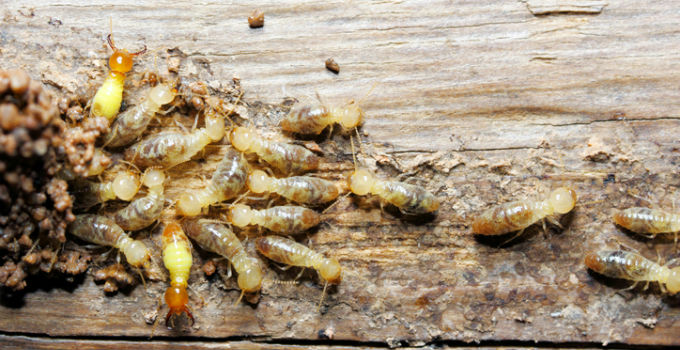Every homeowner in the keystone state needs to be on the lookout for termites. According to the EPA, termites cause billions of dollars in property damage in the United States every year.
Termites eat wood and build tunnels to house their colony. The hollowed out wood, if it’s a part of your home’s foundation, can threaten the integrity of your home’s structural support. A single colony can reach up to 15 million termites and can eat an entire pound of wood a day. Termites are also great hiders, and often, by the time you’ve discovered a termite infestation, your home has probably already suffered significant termite damage.
Where do termites live?
According to Pennsylvania State University, termites love hanging out in cellars or basements, which are common spaces in Pennsylvania homes. They seek out the structural wood, like studs, joists, subflooring and floors, and mudsills. Any wood that has contact with dirt or rests on the ground is especially accessible. During Pennsylvania’s brutal winters, termites also seek out spaces to keep warm, such as water heaters and pipes or areas around furnaces and chimneys.
Termites usually become active in late winter or early spring, when hordes of the reproductive caste of a termite colony swarm around doors and windows, looking for mates. Once two termites find one another among the chaos, the new couple will look for moist wood with enough space to house a new colony.
What kind of termite lives in Pennsylvania?
Of the more than 2,000 species of termites on earth, Reticulitermes flavipes, incorrectly known as eastern subterranean termites, are the most common termite in Pennsylvania. They’re social pests with three primary castes: the reproductives (queen, king, and secondaries), soldiers, and workers.
Kings and queens are dark black or brown and vary between three-eighths to half an inch long. Secondaries are back-up queens, i.e. the supplementary reproductive females appearing in mature colonies if the conditions are favorable.
If your house has a termite infestation, it’s the off-white worker termites building tunnels and colonies, feeding on the wood, and doing most of the damage. Adult workers measure a quarter inch in length, around the same length as an adult soldier termite.
Soldier termites have long yellow heads with huge jaws. A colony has more workers than it does soldiers, and soldiers depend on workers to feed them. Soldiers earn their keep by using their jaws to defend the colony when it is invaded.
What are some signs of infestations?
- Termite tubes: Termites build brown and tan tubes by eating wood that function as sheltered pathways. According to Mississippi State University, termites will build these shelter tubes on foundation walls or pipes and support tiers under houses. These tubes are also often found on door and window trim and cellar walls. They’re covered in a mud-like material glued to the wood.
- Damaged wood: Infestations can cause wood to become hollowed out or look rotted.
- Sunken areas on wallpaper or paint: Narrow lines of sunken paint, wallpaper, or other surfaces often indicate that termite colonies are living beneath the surface. Termites eat the outer cardboard covering and wood paneling.
How can I help prevent termite infestations?
The University of Kentucky lists these tips:
- Avoid storing firewood, cardboard boxes, and the like in crawl spaces or against foundations. These materials are some of termites’ favorite snacks, and they can also give termites an open gateway into your home.
- Keep your crawl spaces dry. Termites need wood to be moist to build their colonies.
If termites have already made their way into your home, don’t attempt to get rid of them yourself. Trained professionals know how to apply specialized termite treatments that help prevent further damage to your abode. Give Seitz Bros. a call today.

